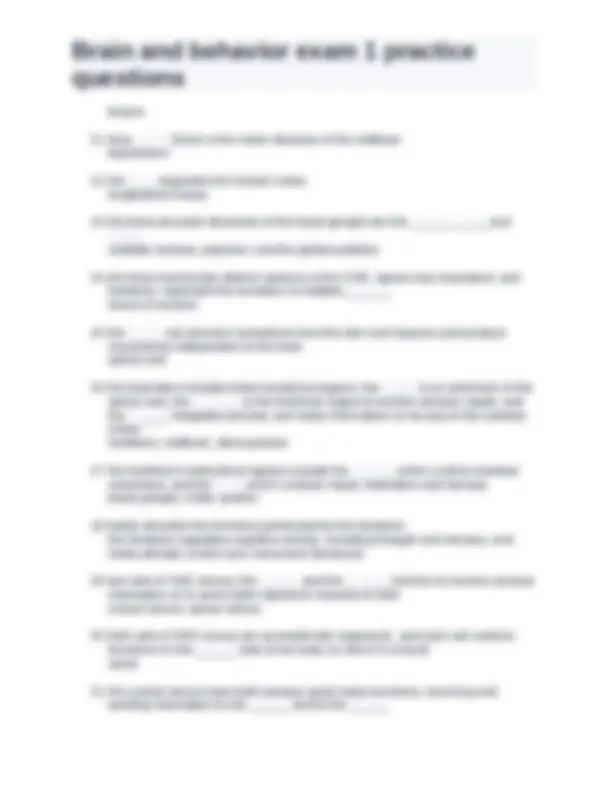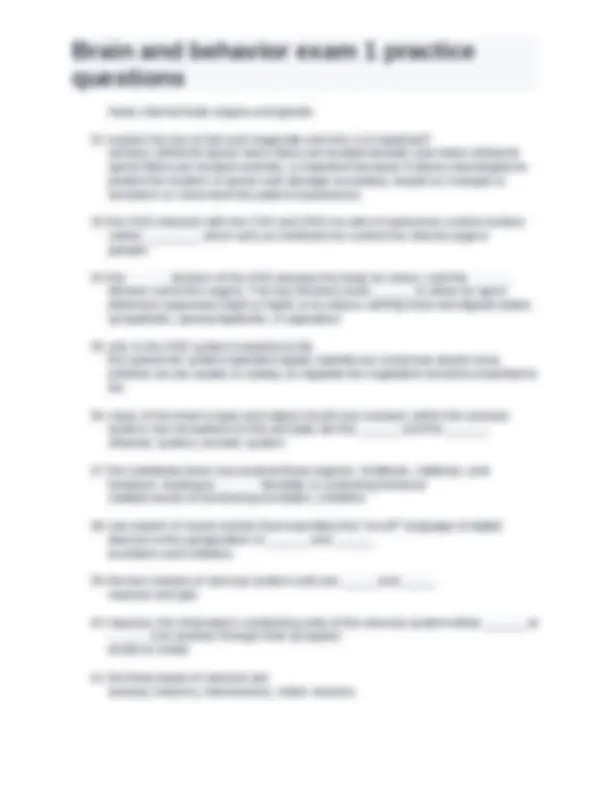Brain and behavior exam 1 practice
questions
1. the function of the nervous system is to produce ____ within a perceptual world
that is created by the ____
movement/behavior, brain
2. The left and right cerebral hemispheres are divided into four lobes:
frontal, temporal, parietal, occipital
3. the human nervous system has evolved the potential to change, to adapt to
changes in the world or to compensate for injury, this is called:
neuroplasticity
4. neural tissues of two main types, ____ forms the connections among cells, and
____ collects and processes afferent or efferent sensory information
white matter, gray matter
5. the nerve fibers that lie within the brain form ______. outside the brain they are
called _______.
tracts, nerves
6. One major set of brain structures, the _____ or the _____, whose nearly
symmetrical left and right ____ enfold the _______, connects to the spinal cord
cerebrum, forebrain; hemispheres; brainstem
7. the brain and spinal cord together make up the _____. All the nerves radiating
out beyond the brain and spinal cord as well as all the neurons outside the brain
and spinal cord form the ____.
Central nervous system, peripheral nervous system
8. a simple definition of behavior is any kind of movement in a living organism. all
behaviors have a cause and function, but they vary in complexity and the degree
to which they depend on ____, or ____.
inherited, learning
9. explain the concept of embodied language
we understand each other not only by listening to words but by observing
gestures and body language and that we think not only with silent language but
also with overt gestures and body language
10.The view that behavior is the product of an intangible entity called the mind
(psyche) is _____. The notion that the immaterial mind acts through the material
brain to produce language and rational behavior is _______. _______ the view
that brain function fully accounts for all behaviors, guides contemporary research
on brain and behavior.
mentalism, dualism, materialism














